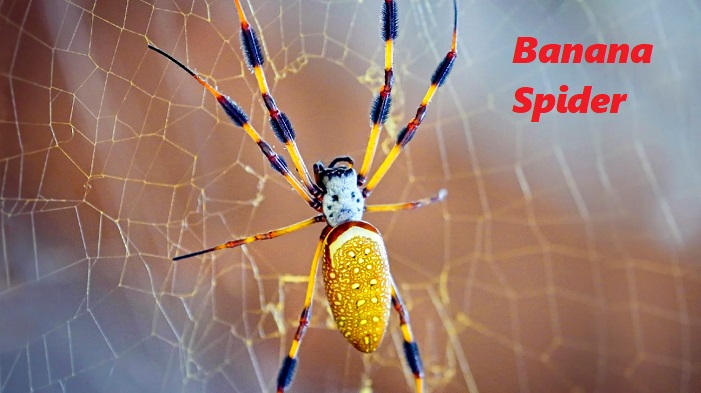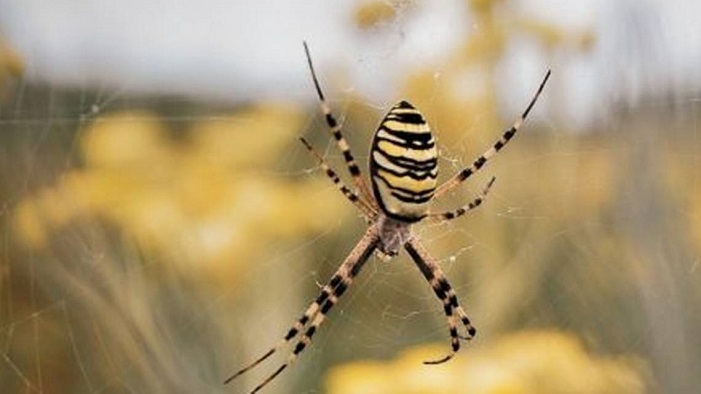Banana Spider: Everything You Need to Know About This Giant Web Weaver!

When it comes to fascinating creatures in the animal kingdom, the banana spider always tops my list. I’ve spent years exploring and learning about these unique arachnids, and trust me, there’s so much more to them than meets the eye.
From their impressive web-spinning skills to their surprisingly gentle nature, banana spiders are truly one-of-a-kind. In this blog post, I’m breaking down everything you need to know about these incredible creatures.
What Is a Banana Spider?

The term “banana spider” is often used to describe different species of spiders, but the one I’m referring to is the Nephila species, also known as the golden orb-weaver. These spiders are famous for their golden silk webs, which can stretch up to six feet wide!
Despite their somewhat intimidating size (females can grow up to two inches long), banana spiders are harmless to humans. They’re more interested in catching insects than causing any trouble.
Why Are They Called Banana Spiders?
You might wonder, “Do banana spiders eat bananas?” The answer is no! They’re called banana spiders because they’re often found in banana trees and plantations in tropical and subtropical regions.
This nickname can be confusing since there are other spiders with similar names, like the Brazilian wandering spider, which is unrelated to the golden orb-weaver.
What Makes Their Webs So Special?
One of the most remarkable things about banana spiders is their silk. It has a natural golden hue that glistens in the sunlight, and it’s one of the strongest biological materials in the world. Their webs are not only a work of art but also incredibly durable, capable of catching prey much larger than the spider itself.
Fun fact: Scientists have even studied banana spider silk to create stronger synthetic materials for industries like medicine and construction.
Where Can You Find Banana Spiders?
If you’re like me and love spotting these creatures in the wild, you’re in luck! Banana spiders are found in warm climates across the globe, including:
- The southeastern United States
- Central and South America
- Asia
- Australia
You’ll typically find them in forests, gardens, or anywhere they can stretch their webs between trees or shrubs.
Are Banana Spiders Dangerous?
This is probably the question I get asked the most. The short answer? No. While banana spiders do have venom, it’s primarily used to immobilize their prey. Their bite might feel like a mild bee sting, but they’re not aggressive toward humans unless provoked.
How to Identify a Banana Spider
Here are some key features to look for:
- Color: Females have a striking golden-yellow body with dark markings, while males are smaller and duller in color.
- Legs: Their long legs have a distinctive striped pattern.
- Webs: Their golden orb-shaped webs are a dead giveaway.
My Personal Encounter with a Banana Spider
I’ll never forget the first time I stumbled upon a banana spider’s web while hiking. The sheer size and intricate design of the web left me speechless.
I was initially hesitant to get too close, but as I observed the spider in action, weaving its web with such precision, I couldn’t help but admire its craftsmanship.
Should You Be Concerned If You See One?
If you spot a banana spider in your yard or while out exploring, there’s no need to panic. In fact, they’re beneficial to have around because they keep the insect population in check. Just admire them from a safe distance and avoid disturbing their webs.
The Ultimate Guide to Allen Wrenches: Why Every Toolbox Needs One
Final Thoughts
Banana spiders may look intimidating, but they’re some of nature’s most fascinating creatures. Their golden silk, expert web-building skills, and gentle demeanor make them worth appreciating rather than fearing.
Whether you’re an arachnid enthusiast or just stumbled upon this post out of curiosity, I hope you’ve learned something new about these incredible spiders. Next time you see a banana spider, take a moment to admire its beauty—it’s a masterpiece of nature!





